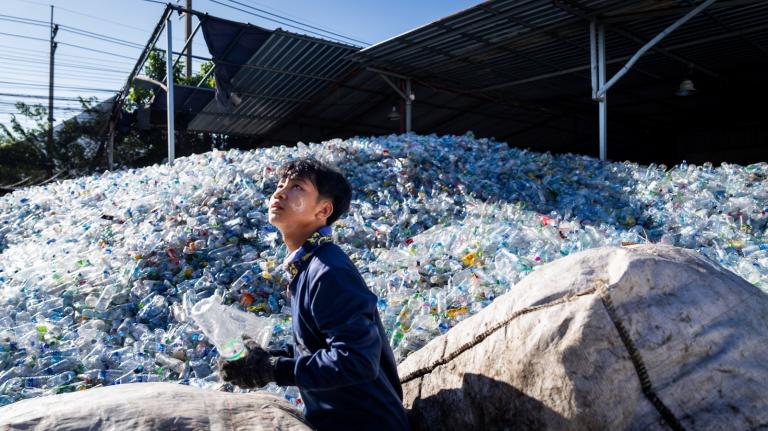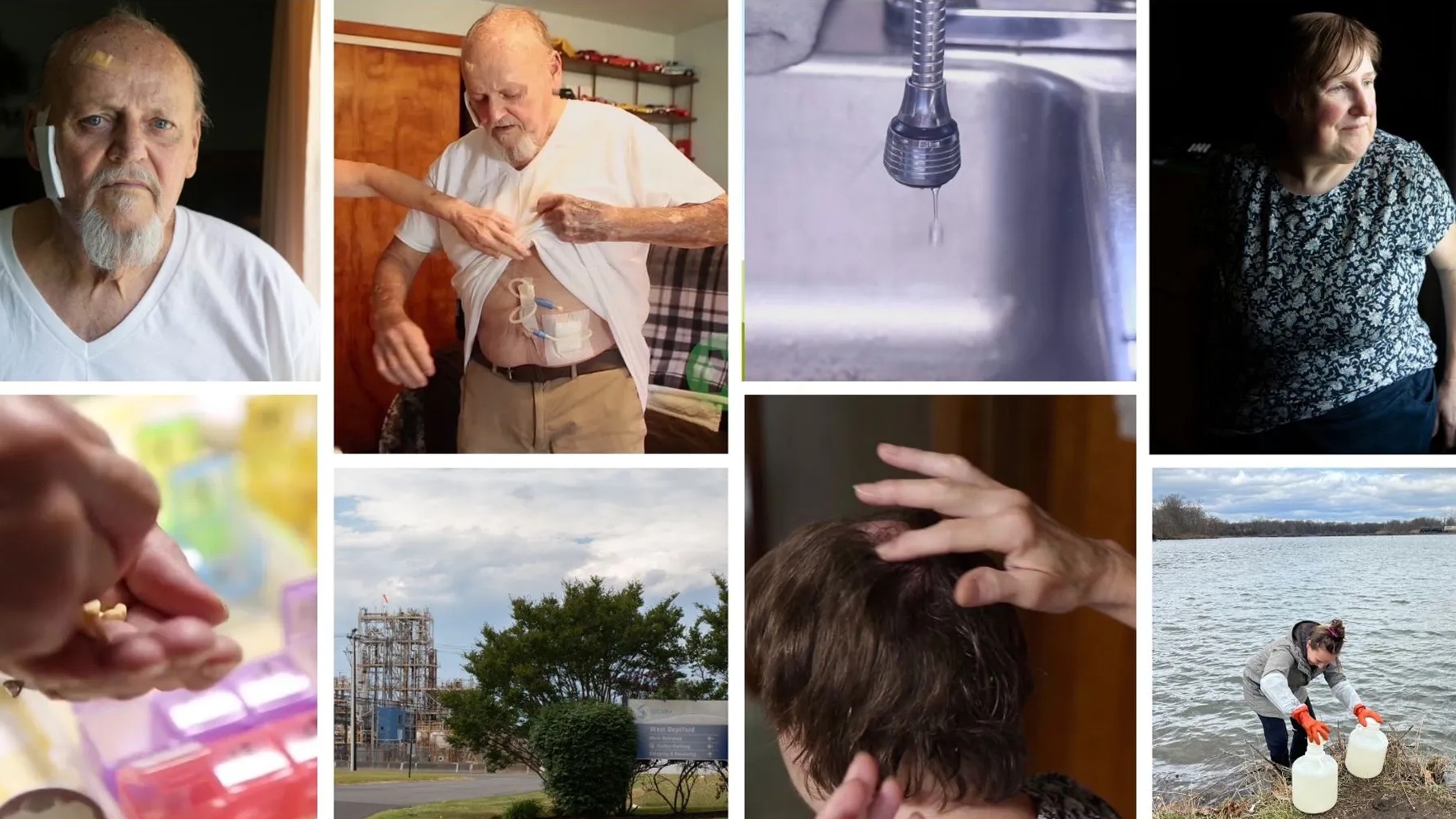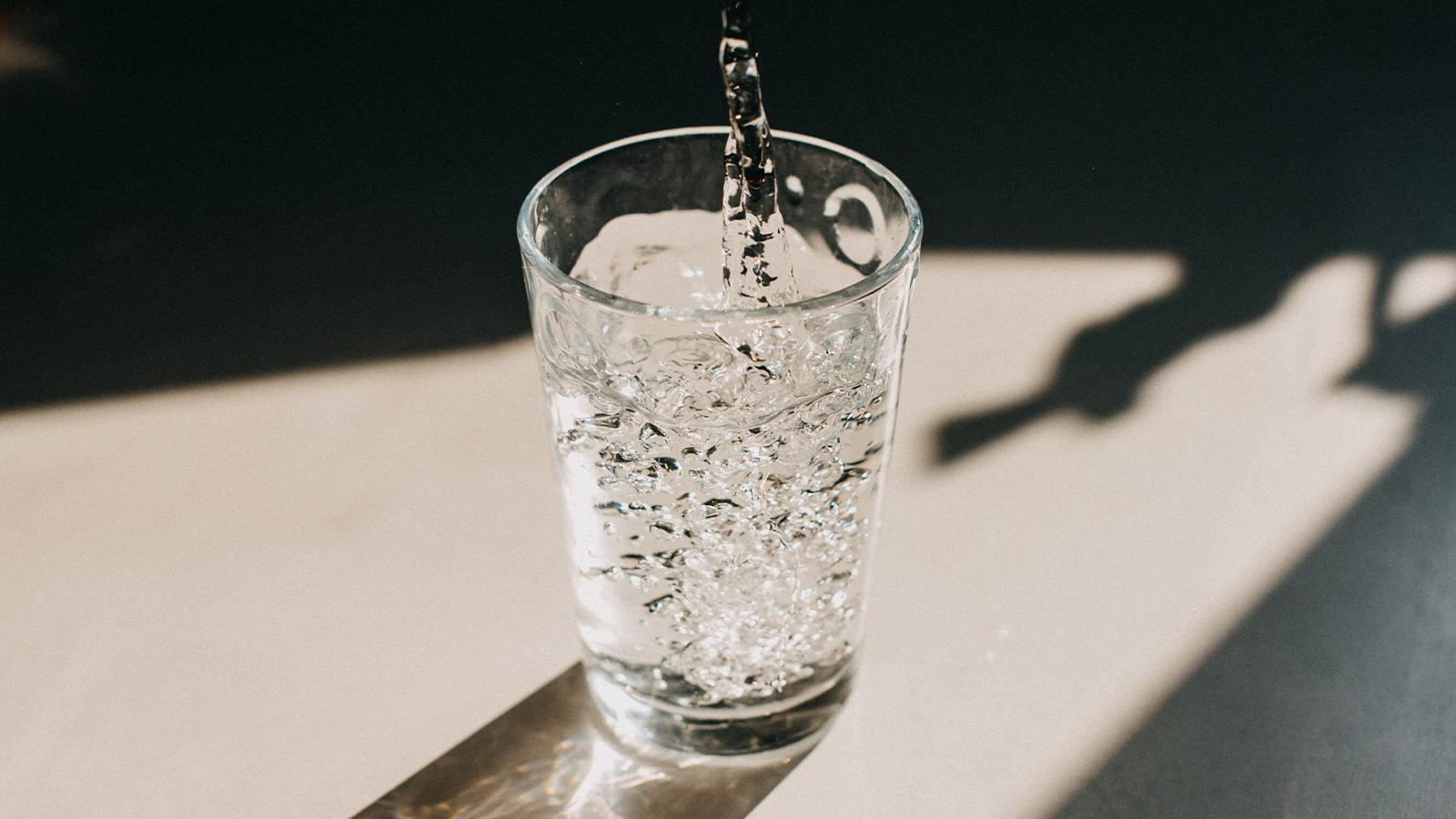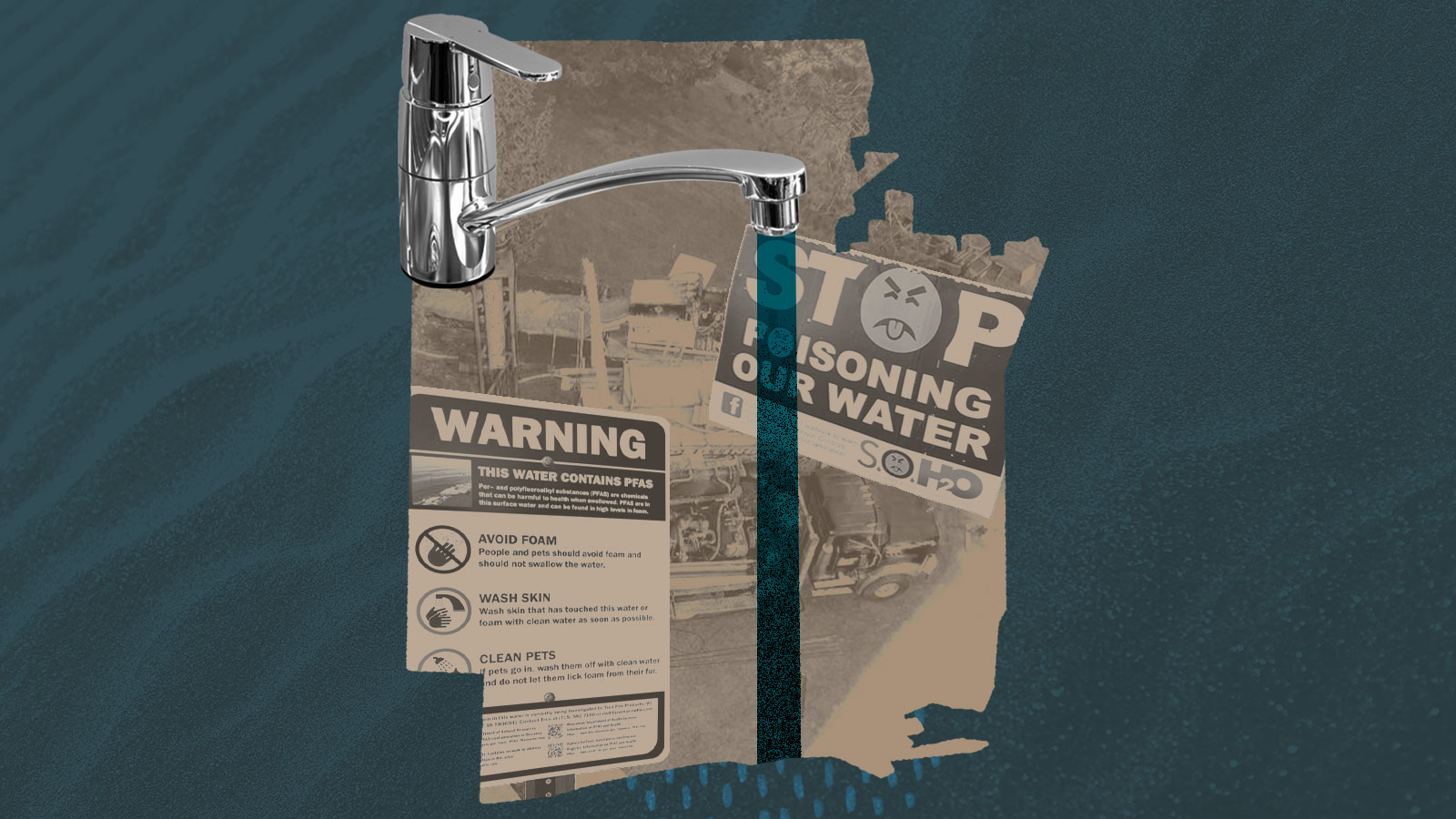Propulsion without the need for petroleum: That’s the lithium-ion battery’s promise.
Backed by government incentives across the globe, lithium-ion batteries are hailed as key to a green transportation revolution — and for good reason. They cut planet-warming emissions. They promote independence from fossil fuels.
Today, electric vehicle purchases are soaring. They’re expected to account for half of car sales worldwide in the next decade.
But as battery production ramps up — amid record spending to combat climate change — so does a hidden risk that few outside New Jersey or southern France may recognize. And it’s a risk residents of Augusta, Georgia, and communities along the South’s “battery belt” and elsewhere ought to know.
The same companies that spewed “forever chemicals” linked with cancer and other diseases in neighborhoods around the world are now key players in the development of EV batteries — sometimes with hefty taxpayer support. Often those companies keep their chemical formulas and emissions from the public, an investigation by The Examination, reported in partnership with Columbia Journalism Investigations, the Post and Courier and Belgian public broadcaster RTBF, and published in partnership with Mother Jones, has found.
Companies making battery chemicals stand accused of misleading regulators, hiding information and contaminating communities while making similar, related products.
For decades, forever chemical makers have been “trying to get away with having to tell the authorities as little as possible,” said Gretta Goldenman, a retired attorney who consulted with European Union agencies to improve chemical regulations. “There’s been a real wakeup call in the last five years about how much these companies have not been disclosing.”
Transitioning quickly from gas-guzzling cars and trucks to electric vehicles remains important to reducing motor vehicle exhaust, a leading factor in death and disease, as well as carbon dioxide, a key driver of climate change. So, experts say, it’s crucial to make lithium-ion batteries in ways that don’t pollute communities.
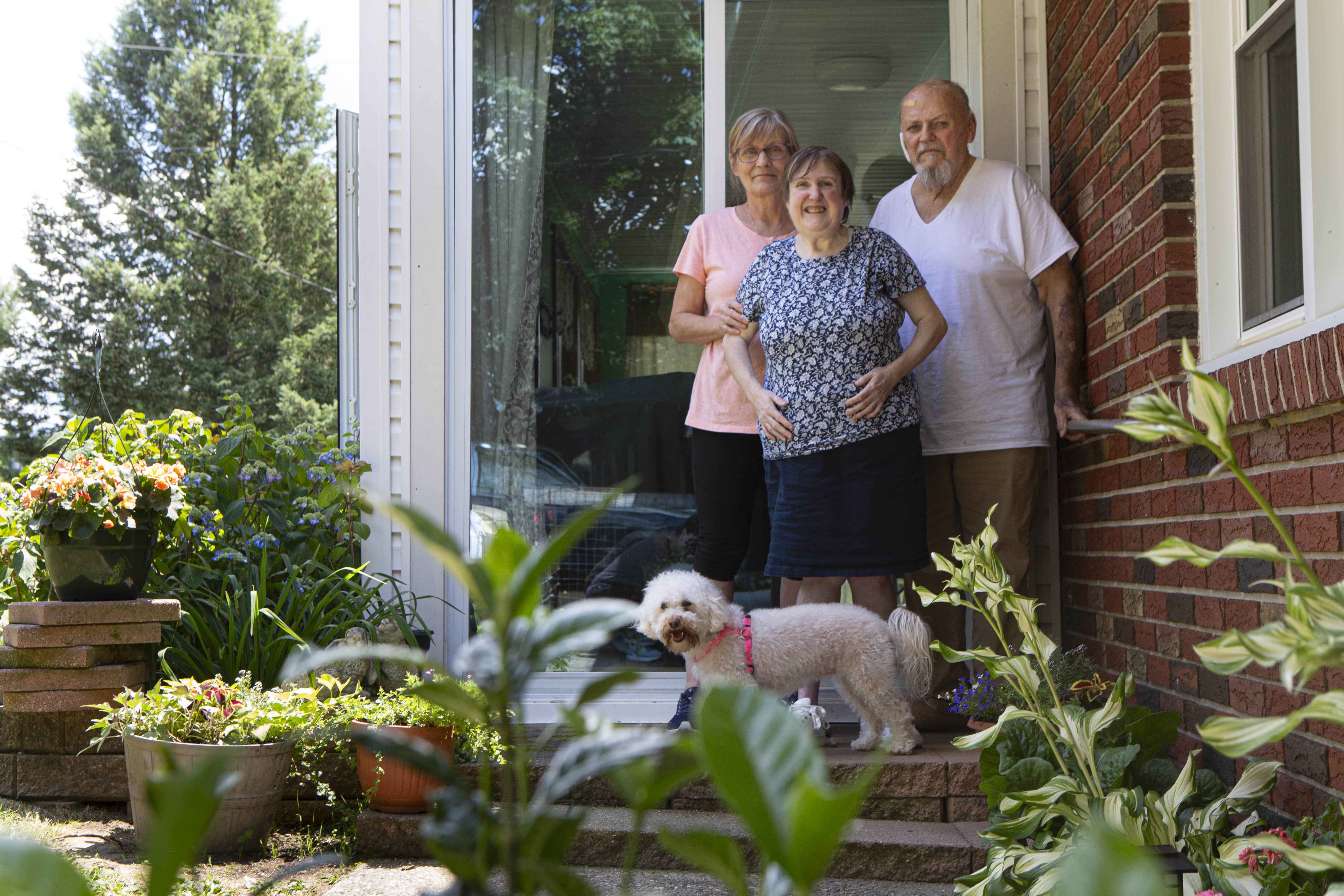
At a facility in Pierre-Bénite, France, chemical giant Arkema produces PVDF, a key polymer used in EV batteries. The plant created such a stew of chemical waste, while making PVDF for other purposes, that it ignited recent protests, led 41 cities to haul the company into court and prompted French investigators to search it and other Arkema sites. Arkema says activists are overstating the risks and that it is phasing out those waste products anyway. Company representatives also say Arkema uses a different method to make PVDF for electric cars, but did not provide details.
In Pedricktown, New Jersey, Richard and Kim Bond spend their days visiting doctors for scores of ailments, and they believe forever chemicals are the culprit. They’re four years into a legal battle in federal district court against chemical companies, including Arkema and Solvay Specialty Polymers — the former and current owners of a nearby PVDF plant.
Both companies dispute the claim that the facility contributed to the Bond family’s health issues.
The state of New Jersey sued the companies, too, claiming they conducted “abnormally dangerous activities” that contaminated drinking water for thousands of people with some of the highest levels of forever chemicals ever recorded. Solvay Specialty Polymers, in particular, downplayed risks, withheld details about chemicals it was using and did not disclose how its work might harm people, the state alleged.
Arkema has tentatively agreed to pay the state up to $75 million — without admitting wrongdoing. In March, Solvay Specialty Polymers agreed to pay $394 million, although it, too, did not admit fault.
One month later, 745 miles south in Augusta, Georgia, city officials joined executives from Solvay Specialty Polymers on a sand-filled stage near a 30-acre patch of pine forest where landowners once raised hogs and butter beans. They used golden shovels to break ground on a plant expansion. Here, the company aims to make PVDF exclusively for EV batteries — with a $178 million grant from the U.S. Department of Energy.

The company said there’s no cause for worry; this product will be made using a different process. Safeguards are in place. Government scrutiny will be heavier.
Outside experts say Solvay’s new approach is likely safer but aren’t convinced that makes it safe.
As Ian Cousins, a professor at Stockholm University in Sweden and one of Europe’s leading “forever chemical” experts, put it: “I wouldn’t want it on my doorstep.”
Much has been made of the risks of mining lithium and other precious metals for EV batteries. That process has disrupted sensitive environments, drained water supplies and, with cobalt, even led to slave labor.
Less attention has been paid to the production of batteries’ chemical ingredients — or to the track records of the companies making them.
The chemicals needed for lithium-ion batteries pose tricky problems. They must withstand heat and corrosion, repel water and be electrochemically stable while meeting performance standards. The industry has often counted on materials that use — or produce as waste — per- and polyfluoroalkyl substances, or PFAS.
This group of more than 10,000 chemicals is found in nonstick coatings, cleaning products and firefighting foams. Exposure to small amounts of some may decrease fertility, weaken immune systems and delay development. Others have been linked to kidney disease, liver issues or prostate, ovarian and testicular cancers. They’ve earned the nickname “forever chemicals” because they take a long time to break down.
Europe and the U.S. for decades have largely relied on chemical companies to self-report production and emissions of these contaminants. Other major forever chemical manufacturing hubs — notably China and India — have barely been regulated.

Too many industry practices aren’t shared with the public, said Jonatan Kleimark of ChemSec, a European nonprofit that advocates for substitution of hazardous chemicals. “We have a very big lack of transparency in the supply chain and in the production.”
Consider Chemours. The DuPont spinoff was discovered in 2017 to have contaminated North Carolina’s Cape Fear River — and drinking water for hundreds of thousands of people — with forever chemicals it used to make Teflon. The Environmental Protection Agency has linked those PFAS to cancer, and even the U.N. Human Rights Commission chastised the company for its emissions. Only after Chemours got caught polluting did the public find out what else was in its wastewater: 250 “previously unidentified” PFAS.
Chemours, in a statement, said it has spent millions of dollars installing waste-capturing technologies and has committed to dramatically curtailing PFAS emissions in North Carolina.
Today Chemours markets Teflon for use in EV batteries.
Richard Bond is a 71-year-old retired truck driver whose family hails from southern New Jersey. He has lived most of his life 14 miles downriver of Solvay Specialty Polymers. He and his wife, Kim, moved there in the 1970s, eventually settling in the hamlet of Pedricktown. The couple relished the expansive farmland and the close-knit community of fewer than 1,000.
After Kim gave birth to the couple’s eldest daughter, Christina, in 1978, they noticed she wasn’t walking and talking like other toddlers. Doctors attributed her issues to developmental delays.
At age 8, Christina was diagnosed with a rare disorder often caused by a gene mutation that stalls bone, muscle, and brain development. Genetic testing would later reveal that neither Kim nor Richard has the mutation.
And Christina wasn’t the only one with a baffling health condition. Kim began suffering from gastrointestinal problems shortly after her daughter’s diagnosis. She was often nauseous, doubled over in pain. Richard, too, noticed his hands and feet growing weak; sometimes they went numb. Their other daughters experienced unusually painful periods later attributed to endometriosis. Two of them have since had gotten hysterectomies. The family found no explanation for these ailments.
“This has been our life,” Kim said. “Just going from one specialist to another, trying to find answers.”
Then in 2019, the Bonds received a letter from New Jersey officials offering to test the drinking water from their private well.

The results shocked them. Tests showed their drinking water was riddled with forever chemicals — which they’d never heard of before.
“For 45 years we’ve lived in it, bathed in it, cooked with it, drank it,” Richard said.
One year later, the family sued Solvay and Arkema, among other chemical companies, blaming the area’s PFAS pollution for the health ailments of their daughter. Solvay, along with the other companies, are fighting the claims. The case is ongoing.
While the court battle is over Christina’s health issues, the rest of the Bonds believe their sicknesses, too, stem from exposure to forever chemicals. Today, Richard’s kidneys have shut down, forcing him to undergo dialysis every day. He’s ineligible for a kidney transplant. Christina, now 46, needs help with life’s daily tasks like cooking a meal and sorting her medication. Kim, 65, balances taking care of her husband and adult daughter with 12-hour shifts as a nurse at a nearby hospital.
“I feel guilty for moving my family into the neighborhood,” Richard said.
And, he said, another thought haunts him: “How do I know what is safe?”
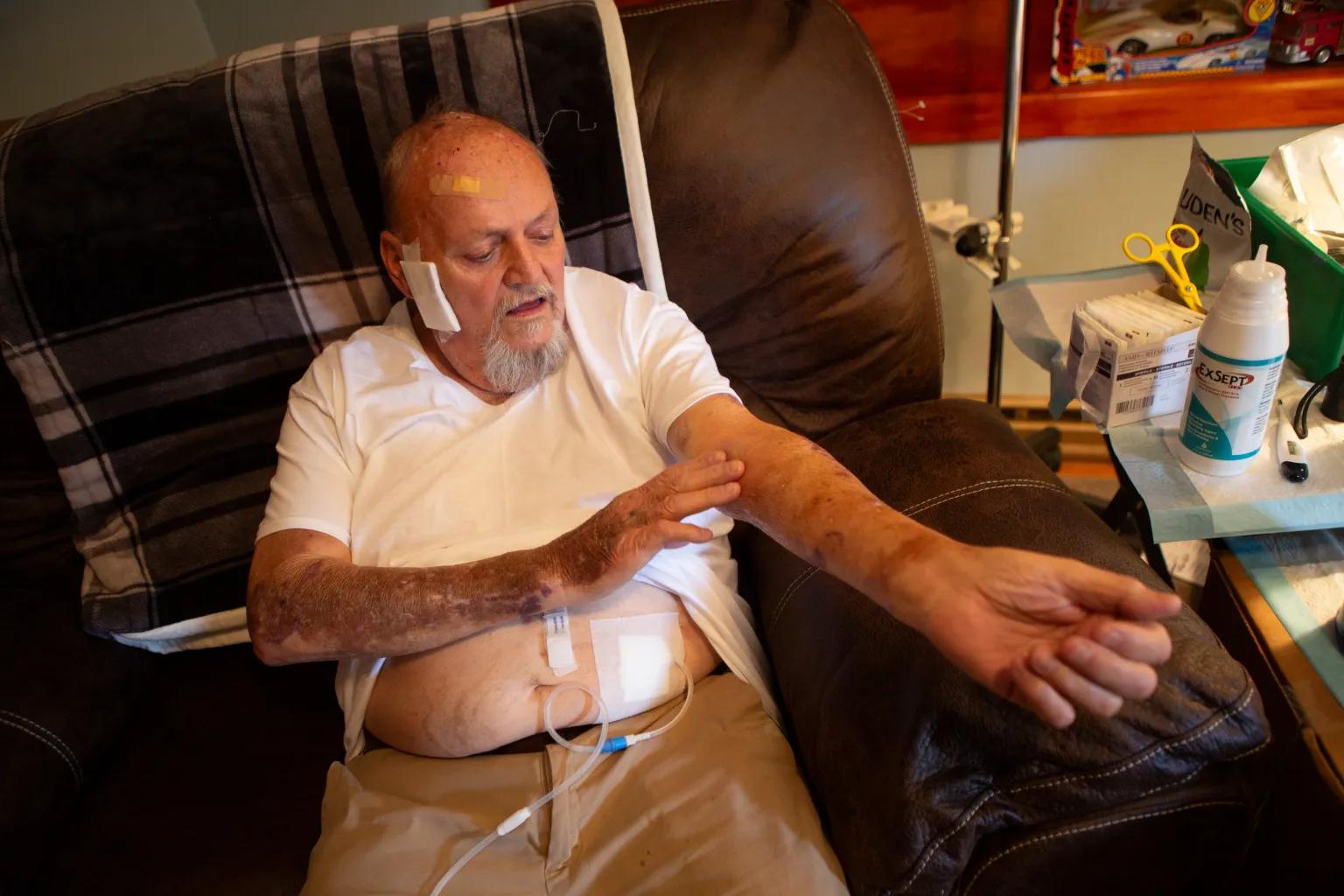
The risks of PFAS are becoming increasingly apparent. Research published just this week in the journal Nature Communications shows that one forever chemical can now be found in water, soil and sometimes snow even miles away from a 3M facility in Minnesota where it was made for about 20 years. The study suggests that this class of PFAS (bis-perfluoroalkyl sulfonimides) — often used to boost lithium-ion battery performance — can affect the behavior of fish in concentrations as small as 25 parts per trillion. Concentrations found in Minnesota were up to 97 times that.
And yet, few studies have explored whether this contaminant might harm people. It’s not even clear how many companies make it. (Solvay advertises it for sale for EVs.) Nor does anyone know how ubiquitous it has become in the environment. Already, small amounts have been found in German drinking water sources.
3M, which recently agreed to a $10.3 billion class-action lawsuit settlement with drinking water suppliers for PFAS pollution without admitting liability, said it is phasing out production of the chemical as part of a wider exit from PFAS manufacturing. Solvay won’t say where or for how long it has produced the chemical.
With the need for EV batteries growing, demand for PVDF is soaring. Six years ago, less than 10 percent of PVDF global production was for batteries, with the rest used for pipes, cable coatings, electronics and other uses. Today, more than 40 percent of PVDF manufactured is used in EV batteries. And by 2028, global production of PVDF is expected to double, JP Morgan data show.

At the urging of climate scientists, governments around the world have offered tax breaks, grants, and loans to speed up the energy transition. So far, 267 new battery projects have been announced in the U.S. just since President Joe Biden took office, 69 of them in the Southeast, which is now often called the battery belt.
While PVDF can be considered a forever chemical, it is largely inert. Some byproducts of producing it, however, can cause trouble for communities. Just ask Edith Metzger.
From her bedroom window in Pierre-Bénite, the 82-year-old can see Arkema’s plant. Her husband worked for many years at the facility, which advertises that some of its PVDF products are “used by all major battery manufacturers in Asia and the U.S.” In 2022, she learned the facility had been polluting her town with PFAS.
A television report that year showed residents already carried significant forever chemicals in their blood from PFAS the plant no longer used. Health experts urged residents to avoid local eggs and vegetables. The report showed the company was still spraying a different forever chemical into air and water. Authorities were alarmed enough to demand that Arkema stop its use by 2025. “It’s bad news after bad news,” Metzger said. “And we don’t know where it is going to stop.”
Arkema said its French plant is reducing PFAS emissions faster than originally planned and added that the company “has been engaged in a process of elimination and substitution” of PFAS additives for years because its products are at the heart of the clean energy transition.
The chemical industry says it has made major strides reducing PFAS — and it has. Companies have eliminated some chemicals with the highest-known risks, are adopting new procedures and are adding emissions and wastewater controls.
“We remain committed to site remediation, advancing water treatment technologies at sites where we have historically manufactured PFAS,” 3M said in a written statement to The Examination.
Still, neither 3M nor Solvay would say how much battery-related PFAS either company has made — or clarify how much, if any, pollution has accompanied that production.

When Augusta, Georgia, officials joined executives from Solvay Specialty Polymers for the battery-chemical maker’s groundbreaking, details about the company’s New Jersey operation didn’t come up.
Georgia leaders focused on the economic benefits of the company’s expansion. The endeavor is expected to bring in more than $800 million for the state’s third-largest city, a onetime textile hub perhaps best known as the home of the Masters golf tournament.
New Jersey leaders declined to answer questions for this story. But court documents, emails, memos and letters show just how difficult it was for the Garden State to get Solvay to stop belching chemicals and clean them up.
“Solvay was recalcitrant from the beginning,” said Erica Bergman, a retired case manager who spent 34 years with New Jersey’s Department of Environmental Protection.
Today Bergman lives in a modest gray home with a nicely kept garden in Johns Island, a Charleston County, South Carolina, community 150 miles from Augusta.
But Bergman grew up in Hamilton, a suburb of Trenton, and joined her state’s environmental agency out of college in the 1980s. In 2013, she became the regulator charged with overseeing Solvay’s cleanup of chemical contamination at its New Jersey plant. She did that for eight years until she retired in 2021.
If she lived closer to the Georgia facility, “I’d be asking some serious questions,” she said.
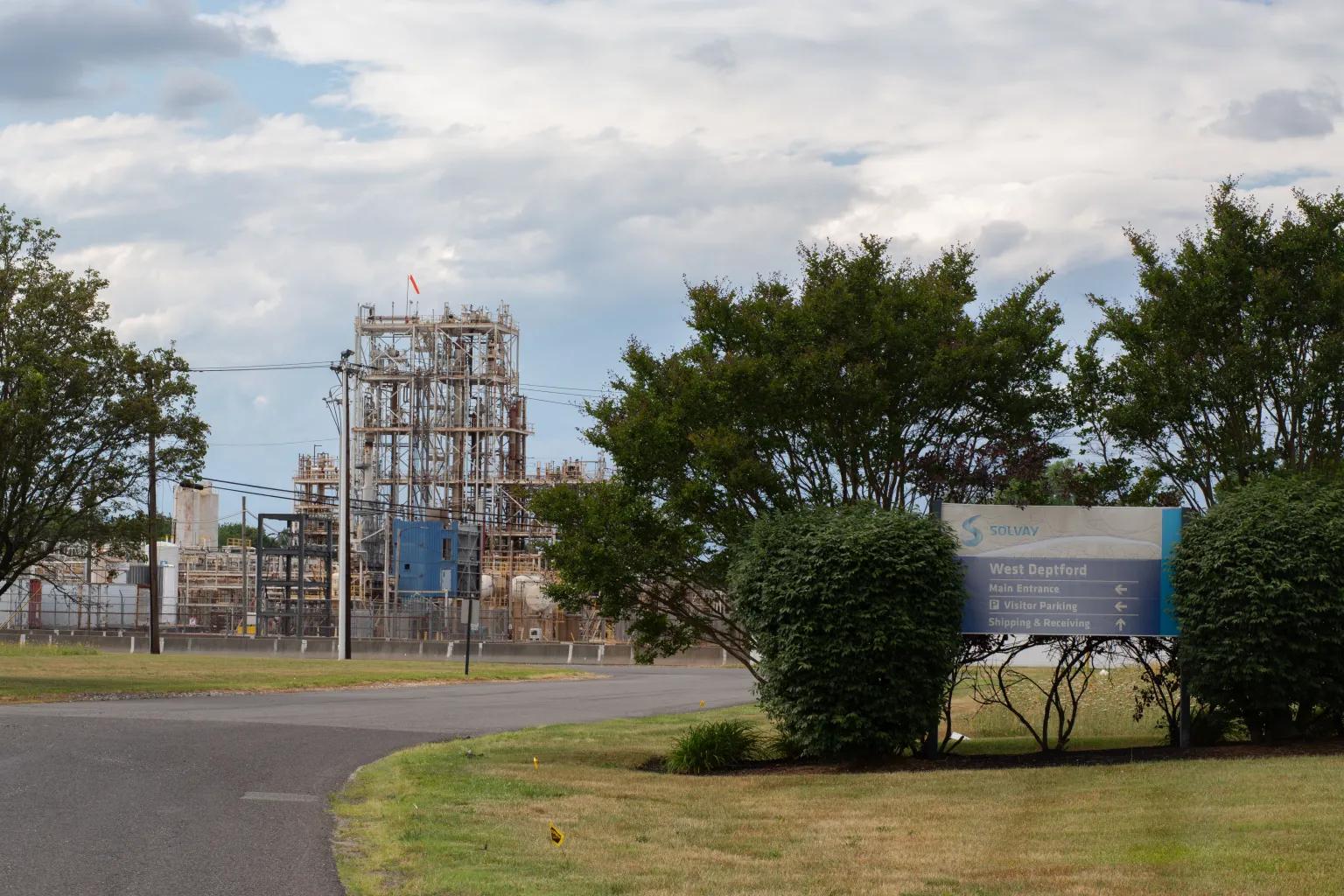
For decades, Solvay had been among the world’s biggest chemical conglomerates. Founded by Belgian brothers in the 1860s, it operated in dozens of countries, making gases for semiconductors and solvents for cement, as well as flavorings, fragrances and plastics. (Last year Solvay split in two; Solvay Specialty Polymers is now run by a new company, Syensqo.)
In 1990, Solvay took over a maze of pipes and tanks on 240 acres in West Deptford, New Jersey, across the Delaware River from Philadelphia International Airport. Lodged in this suburban community of 20,000 near one of the nation’s busiest petroleum and crude oil ports, the chemical plant had been run for years by companies that were later bought by Arkema. The facility used a compound containing another in the alphabet soup of forever chemicals: perfluorononanoic acid, or PFNA. Solvay used PFNA to make PVDF.
By the time Solvay quit using PFNA in 2010, its sprawling facility, which looms over West Deptford’s landscape of cookie-cutter homes and cul-de-sacs, had discharged more than 100,000 pounds of the chemical into the surrounding air and water, according to state regulators.
In 2013, the public learned that PFNA had been found in the Delaware River at higher levels than anywhere else in the world. Drinking water concentrations of it in tiny Paulsboro, an industrial borough a few miles away, were 15 times above what EPA now considers safe.
While PFNA was not yet regulated, studies suggested it may be toxic at extremely low levels. It builds up and persists in the body years after exposure, and it can pose risks to the liver, spleen, kidneys and reproductive organs.
New Jersey health officials urged area parents to feed infants formula made with bottled water. Solvay provided the water, conducted sampling and installed treatment on the well.
All the while, Solvay Specialty Polymers and the state were at war.
Solvay took the state to court for setting emergency limits on PFNA in groundwater. When state regulators proposed limits for the chemical in drinking water, Solvay objected to that too. Then, in 2019, EPA chemists found evidence that Solvay was releasing yet another generation of toxic PFAS. New Jersey’s environmental agency demanded details from Solvay, which the company provided — on the condition that its information be kept from the public.
Those disclosures, first reported in 2020 by Consumer Reports, showed that long before Solvay stopped spewing PFNA, it had been pumping out hundreds of thousands of pounds of other forever chemicals too — and still was. Solvay has known since 2006 that these new substances were toxic to rats. Since 2011, a sister plant in Italy has studied the chemicals in its workers’ blood and found markers for liver damage and other health risks, which the company insists have not led to any “pathological effects on our employees.”
Danger from this new generation of chemicals appeared “similar or higher,” than for the PFAS they’d replaced, the state determined.
“Solvay uses obfuscation and sleight of hand to avoid providing anything that might make them stop using the chemicals they want to use,” said Tracy Carluccio, an activist with the Delaware Riverkeeper Network, an environmental group.
In 2020, the state sued. The scope and extent of Solvay’s remediation work “have been woefully inadequate,” the state charged. “Solvay has consistently failed to take responsibility, correct its past actions, and cease polluting.”
Solvay characterized things differently. In letters and emails to the state, the company highlighted steps it had taken: sampling water, hiring remediation engineers, modeling how its air pollution might have dispersed, adding new treatment to its groundwater. It repeatedly reminded the state that there could be other sources of contamination. Solvay argued — and maintains to this day — that another company was responsible for water contamination in Paulsboro.
The company insisted it was honoring regulators’ expectations.
The state disagreed, arguing that the company’s assertions were “demonstrably false.”
In March 2021, amid this legal battle, Solvay told state officials it was eliminating the use of all PFAS in its processing. It already had completed a phaseout of forever chemical aids used to make PVDF. The company said that marked an 80 percent reduction in PFAS use overall.
The implication: Company waste would no longer contain PFAS.
Within days, the state collected wastewater samples from the plant and shipped them to North Carolina.

Mark Strynar, an EPA chemist, works from a massive office complex in Research Triangle Park, North Carolina, a forested hub for scientists and techies sandwiched between Chapel Hill, Raleigh and Durham. He calls his work “environmental forensics.” That means he’s a sleuth.
Strynar and colleagues analyze water, soil and blood sent to them by other scientists. Their job: identifying synthetic compounds that find their way into nature. Their specialty: uncovering new stuff.
Strynar had helped find PFAS in the Cape Fear River. And he’d helped his EPA colleagues discover Solvay’s “alternative PFAS.” So when containers of chemical waste from New Jersey arrived in the spring of 2021, Strynar and colleague James McCord knew what to do.
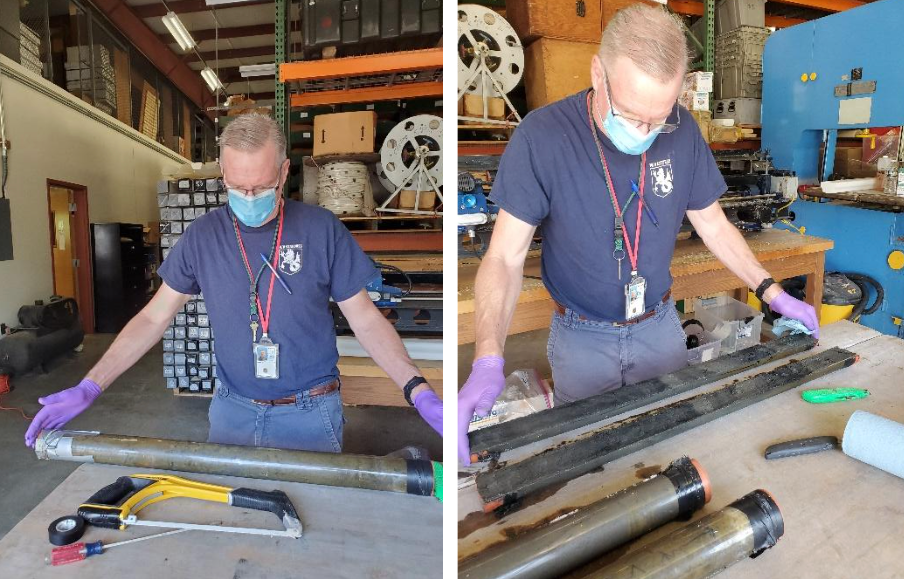
They ran the samples through a high-resolution mass spectrometer, which identifies individual chemical molecules by weight, distinguishing between known and unknown substances.
McCord and Strynar found a surprise: dozens of largely unknown PVDF-like chemicals. By definitions used in Europe, most would be considered PFAS. By definitions the EPA used, many would not. “Oh, these are weird,” McCord recalled thinking. “I’ve never seen anything like that.”
There was no way to track their abundance. Nor could they ascribe any potential risk. That would require months, if not years, of health studies. They are unregulated.
“What do we know, toxicologically? Nothing,” Strynar said. “Do they degrade? Not sure. Do they accumulate? We don’t know.”
The pair dug into patent literature. They talked to organic chemists about polymers. They learned that with processes like the one in use in New Jersey, making PVDF could create residual forever-chemical byproducts — even if none were introduced intentionally.
“You don’t have to add it in at the very get-go,” Strynar hypothesized. PFAS may be generated in the mix and be part of the waste stream.
McCord and Strynar wrote a report and shared it with the state in February 2022.
Today, Solvay Specialty Polymers will neither refute nor confirm the chemists’ findings.

The company said the transition to its new process had not been complete when samples were taken and that it’s following all the regulatory requirements.
Asked if its new production process still released — then or today — the same byproducts found by the EPA, Solvay Specialty Polymers declined to say. Nor would it say if it is still spewing PFAS of any kind into New Jersey’s air or water.
The state of New Jersey, too, declined to tell the public whether Solvay is still releasing PFAS and would not say if it is monitoring the plant’s air emissions at all for forever chemicals.
“It’s déjà vu all over again,” said Carluccio, the regional activist. “This is exactly how the PFAS battle started in the early 2000s — with denial, cover-ups and cat and mouse games … This makes my blood boil.”
While oversight of forever chemicals has increased substantially in the U.S., one element remains largely unchanged: It’s up to governments to prove chemicals are dangerous, not companies to prove they are safe. With businesses routinely swapping out old PFAS when new ones better suit their needs, regulators are often many steps behind.
“It’ll take centuries before there’s enough data to figure out how dangerous each PFAS is,” said Eve Gartner, director of toxic exposure and health at the environmental law firm Earthjustice.
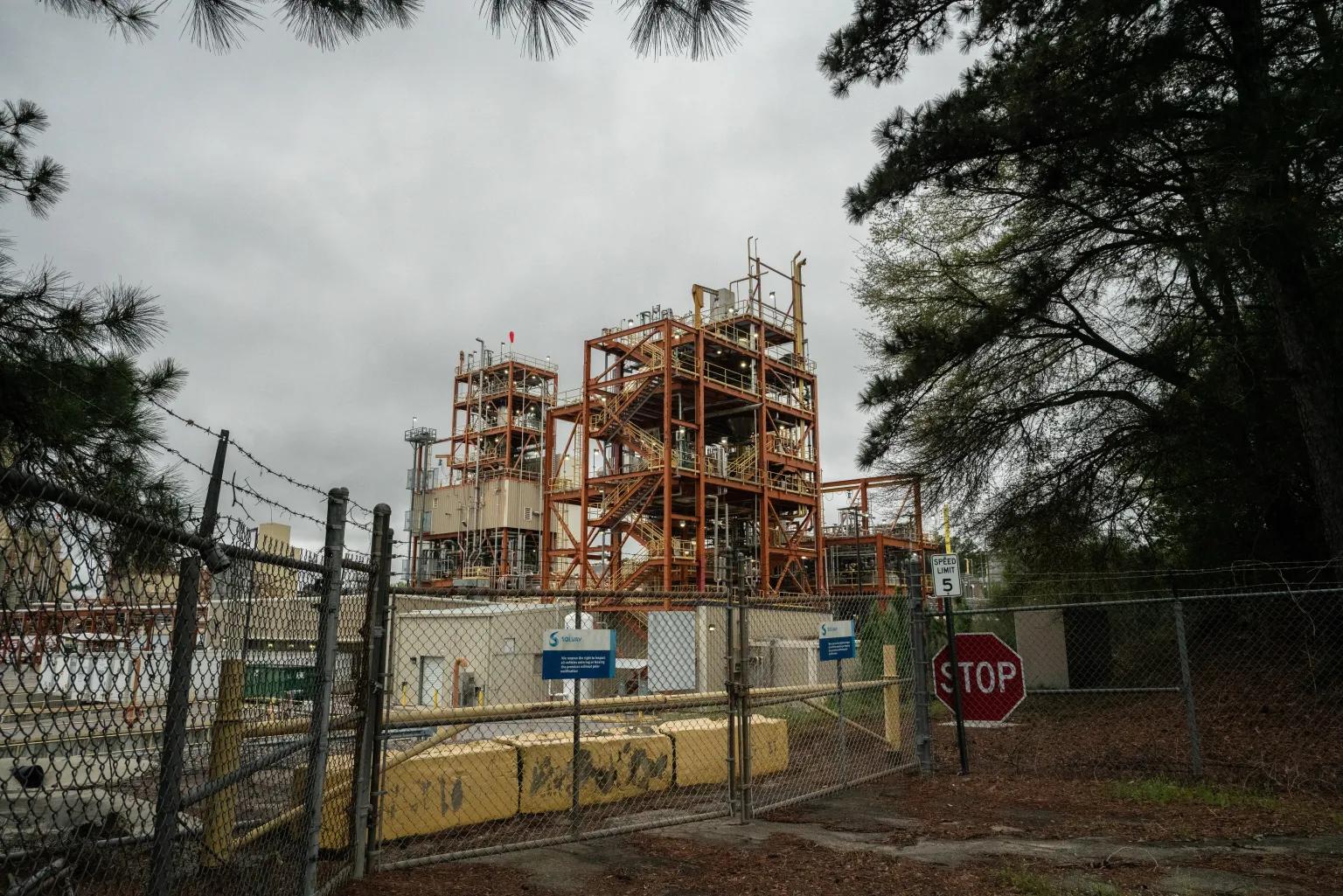
It’s not easy to find Cal Wray’s office in Enterprise Mill, a refurbished flour mill that also happens to be the oldest industrial building in Augusta, built in 1848.
As president of the quasi-governmental Augusta Economic Development Authority, he leads efforts to bring in new companies and help existing ones expand. These days, the greatest rainmaker is Syensqo, spun off from Solvay.
It’s a familiar story playing out across the region’s battery belt as the clean car revolution takes root. Less than two hours away in Covington, Georgia, the nation’s largest lithium-ion battery recycling plant recently opened. EV startup Rivian is building a massive manufacturing site in the next county over. Scout Motors, an all-electric brand, is building a plant outside South Carolina’s capital city, and Redwood Materials has broken ground on a battery recycling operation that promises to be 10 times larger than the Covington plant. Together, those investments total around $11 billion.
In Augusta, Wray expressed little concern about potential downsides, such as possible chemical pollution.
“We tend to make the assumption they’re going to follow the right procedures and follow the safety steps necessary,” Wray said.
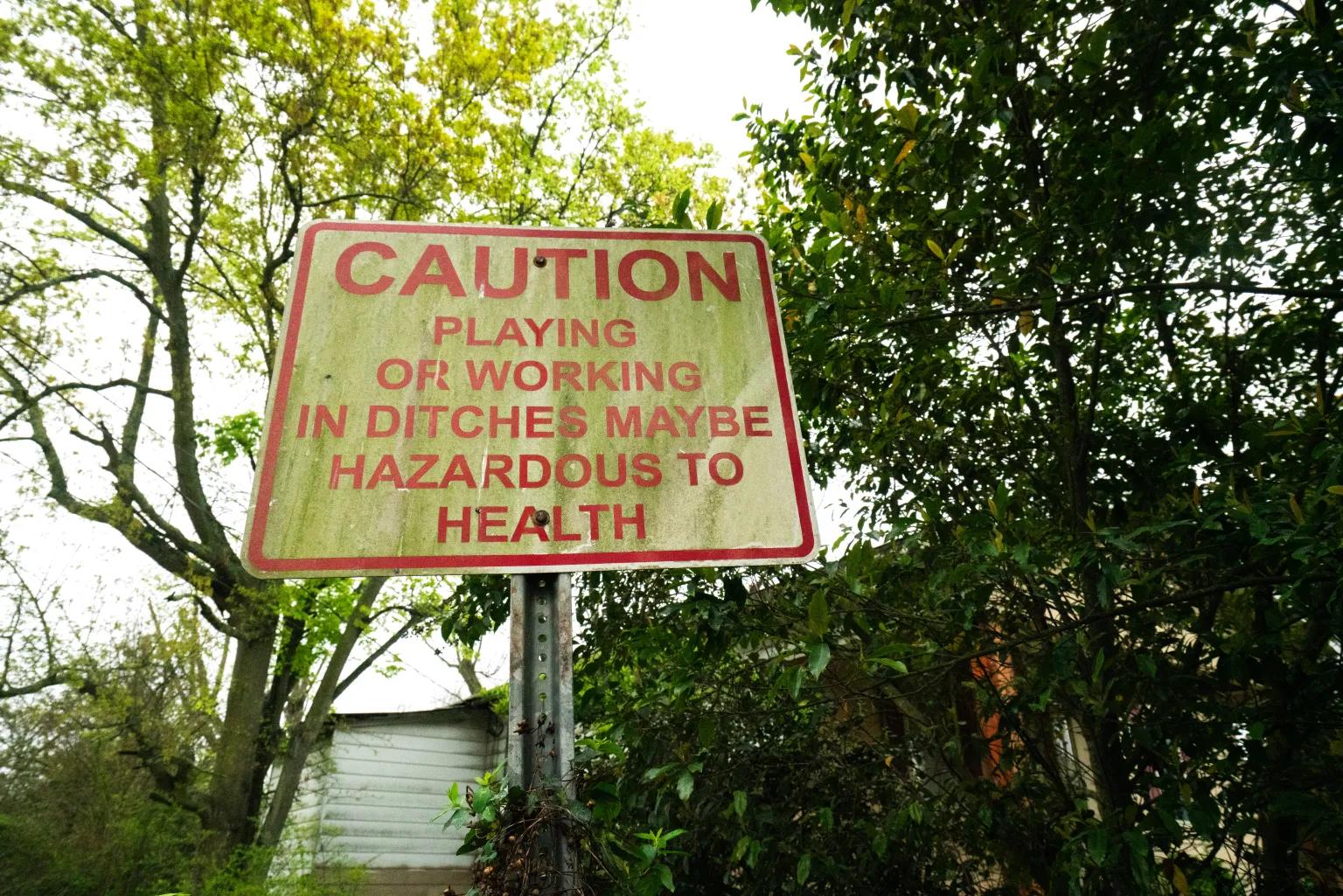
While the White House was cracking down on PFAS, Congress in 2021 and 2022 adopted two massive spending bills that set aside more than $850 billion to usher in clean energy projects.
The new laws amounted to the largest investment in history to combat climate change. But they also meant money wound up going to businesses, like Solvay, that previously had been responsible for pollution.
When production starts, no earlier than 2027, Syensqo, the new parent company of Solvay Specialty Polymers, intends to make enough PVDF to supply more than 5 million EV batteries per year — nearly half of North America’s projected demand, according to a company statement.
And the process the company plans to use at the new plant will not require the intentional introduction of PFAS, Michael Finelli, North America leader for Syensqo, said in an April interview in Augusta.
“It never did, it never will,” Finelli said. “It’s not necessary for this chemistry.”
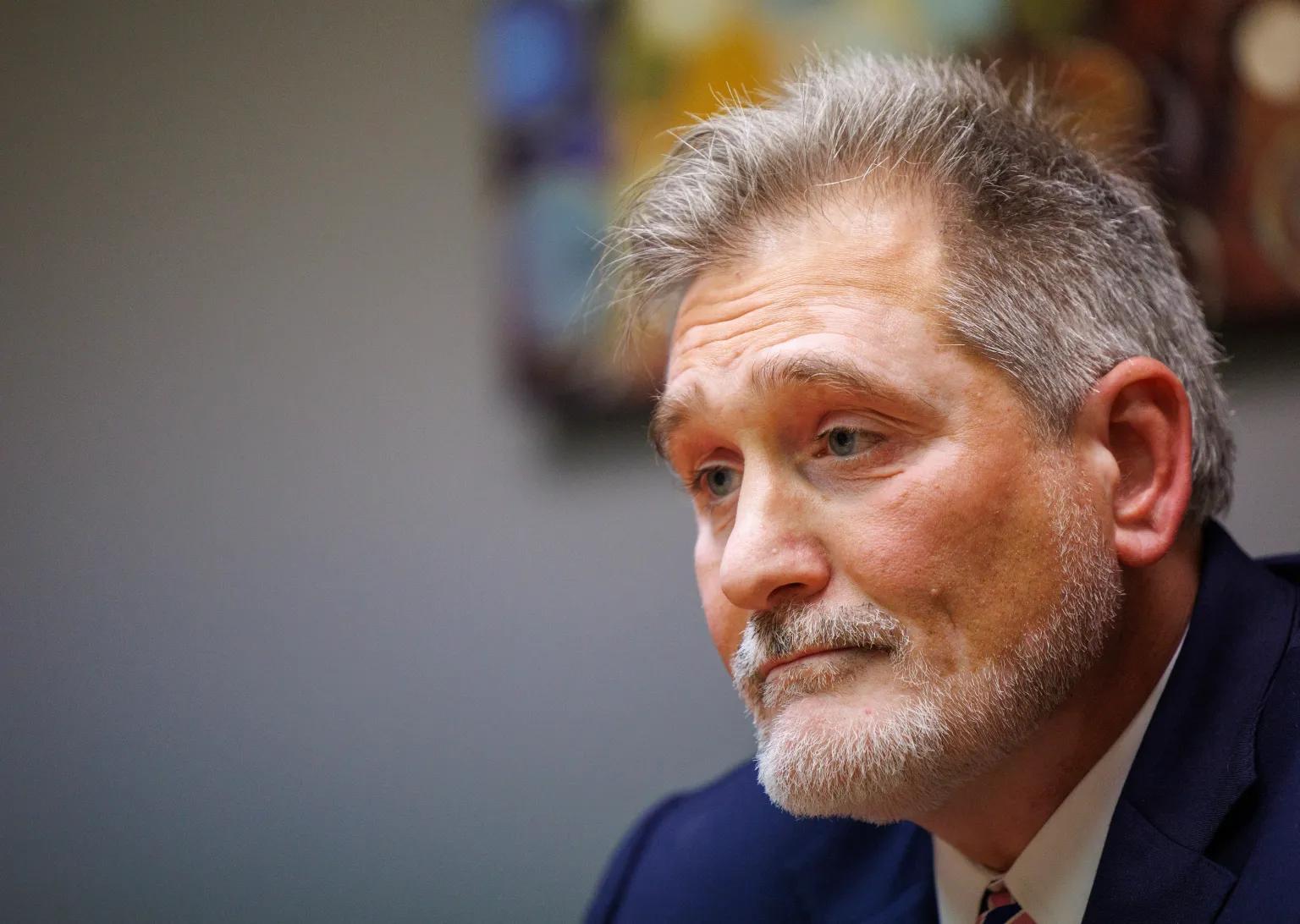
That distinction was helpful when the company was applying for a federal grant, U.S. Energy Department officials said.
“It is possible for companies to make mistakes, to learn from them and, you know, operate better going forward, and we want to create space for that,” said Giulia Siccardo, director of the Energy Department’s Office of Manufacturing and Energy Supply Chains.
Even experts suspicious of this industry concede that the company’s approach makes potential worst-case scenarios — tons of PFAS pollution spreading through communities like it did in New Jersey — unlikely.
It’s still possible, however, for PFAS to be produced as waste even while making PVDF this way, said Joost Dalmijn, one of few independent experts worldwide familiar with this manufacturing process, and a Ph.D. student in Stockholm, who studies chemical company emissions. It depends on the chemicals involved, and those details remain “a bit of a black box for us.”
An analysis by environmental authorities in France this month found chemicals, some of which could be PFAS, in wastewater at a Syensqo plant in Tavaux, France, that makes PVDF using a process similar to the one proposed for Georgia. It’s not clear how much, if any, of those actually were forever chemicals — or how much might be reaching nearby waterways — but an environmental organization, Generation Futures, which specializes in PFAS testing, did its own sampling and found significant quantities of one PFAS in a waste pond that feeds into one of France’s largest rivers.
A Syensqo spokesperson said the chemicals could be from other sources, including nearby companies, or may be legal, permitted discharges. The representative added that Syensqo does not use the PFAS found by the environmental group, and said operations in Augusta don’t include all the production steps that are used in Tavaux.
With Syensqo still in the early stages of permitting in Augusta, details have been slow to emerge. An air emissions permit application filed in Georgia shows the company plans to incinerate waste using a thermal oxidizer. Finelli said that could capture 99 percent of air emissions.
But experts said many factors will determine if that’s true.
After significant legal battles over its PFAS pollution, Chemours, in North Carolina, spent $100 million to install a similar incineration system in 2019, saying it would make the company “best-in-class” when it comes to air emissions. While PFAS emissions are way down, Chemours already has violated its permit conditions several times, according to the state.
Then, earlier this year, experts hired by The Guardian news organization found PFAS emissions outside the plant were up to 30 times higher than the company claimed.
Chemours said such claims about its technology are “not just misleading, they are irresponsible.” The company said its oxidizer’s ability to destroy PFAS were validated in “multiple tests by an independent lab” and by the EPA.
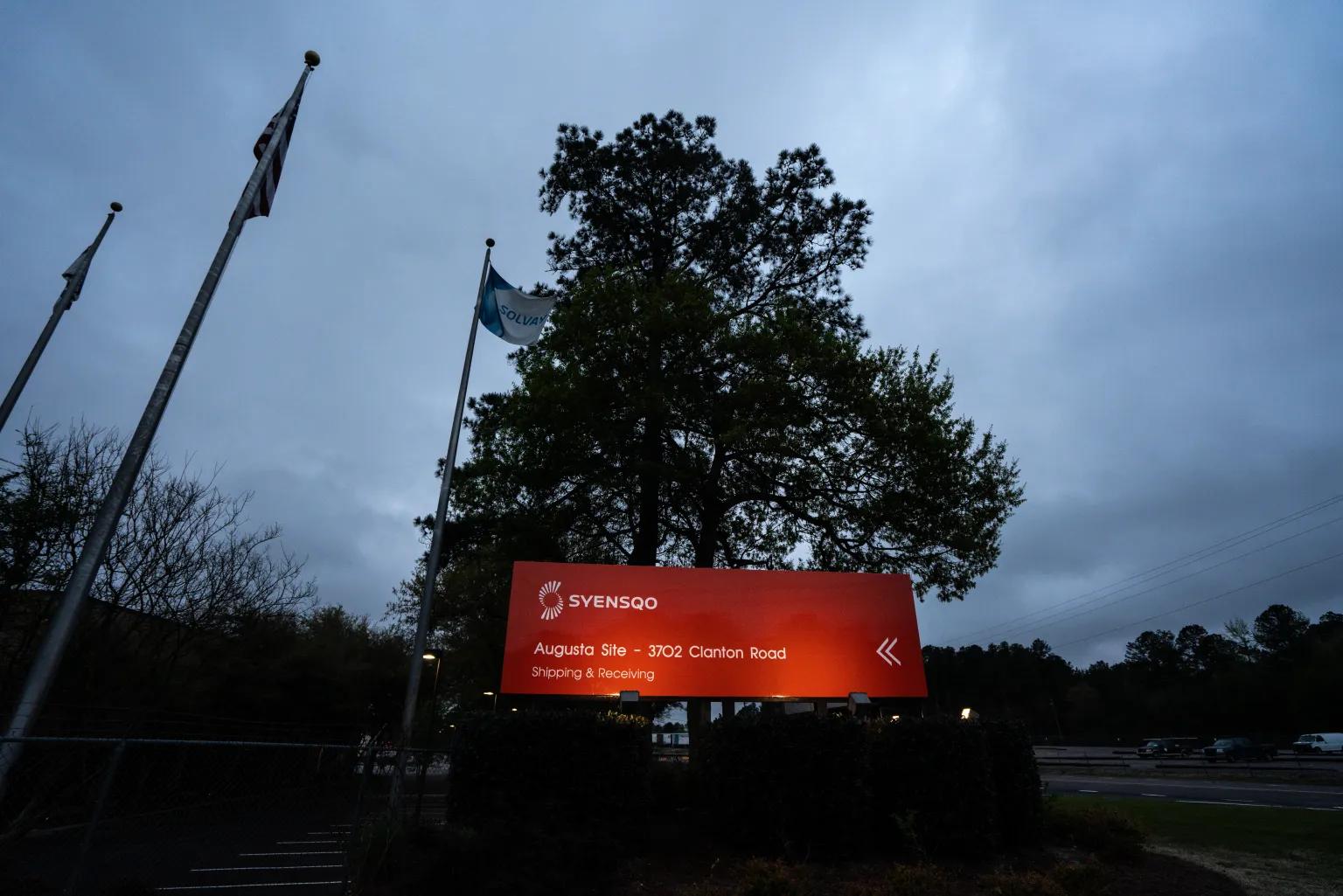
Siccardo said Syensqo will be required to submit to a lengthy public process and publicize all chemical ingredients and byproducts.
Yet when asked by The Examination which chemicals will become part of its waste stream, Syensqo officials again declined to answer.
With a quarter of greenhouse gas emissions coming from transportation, lithium-ion batteries will likely remain central to the energy revolution.
For the moment, at least, the same may be true of PFAS.
From Rivian to Rolls Royce, few in the automotive industry see promising alternatives in the short term. Substitutes for battery chemicals exist. But finding commercially scalable options that are less hazardous and meet performance standards has been hard.
The European Chemicals Agency has been moving to ban most forever chemicals from the E.U. but appears likely to provide an exemption for batteries. Batteries made with PFAS chemicals “will continue to be the mainstay until around 2035,” according to a report from Nissan.
That makes it more important that chemical waste be better managed and not be released into the environment, scientists say. That means more treatment and better monitoring — and more openness from industry and scrutiny by everyone else, said Martin Scheringer, an environmental science professor and renowned PFAS expert at ETH Zurich, a public university.
This industry “has a very bad track record,” Scheringer said. Its plans “need to be followed very closely by watchdogs of all kinds.”
On that sunny April morning, down a small lane off Augusta’s Tobacco Road, a throng of dignitaries passed below an orange-and-white balloon arch to celebrate Solvay Specialty Polymers’ massive investment in their city.
The mayor was on hand. A congressman, too, along with a White House adviser and a federal energy official. They cheered as a flight of executives from the company heralded the company’s workers as explorers and shouted “Go, Dawgs!” to show their affinity for University of Georgia football.
The tattered old Solvay flag no longer flew outside the compound. Instead, a fluorescent orange sign announced Syensqo’s arrival, complete with a fresh logo. Everything seemed brand new.
Noticeably absent were the neighbors of the factory.

For years, Robert Jordan, 60, wondered what went on at the plant near his home where freight trains arrived before the sun most mornings. Neighbors talked of the plant “making plastics,” but few knew specifics of the operation — or its planned expansion.
Not long ago, Augusta had paid for a new road that made the plant’s entrance more private, its workings more mysterious. Local officials like Wray say the road will protect residents from industrial traffic. But all the activity made Jordan and some of his neighbors more leery of what might be spewing from the plant’s steaming towers.
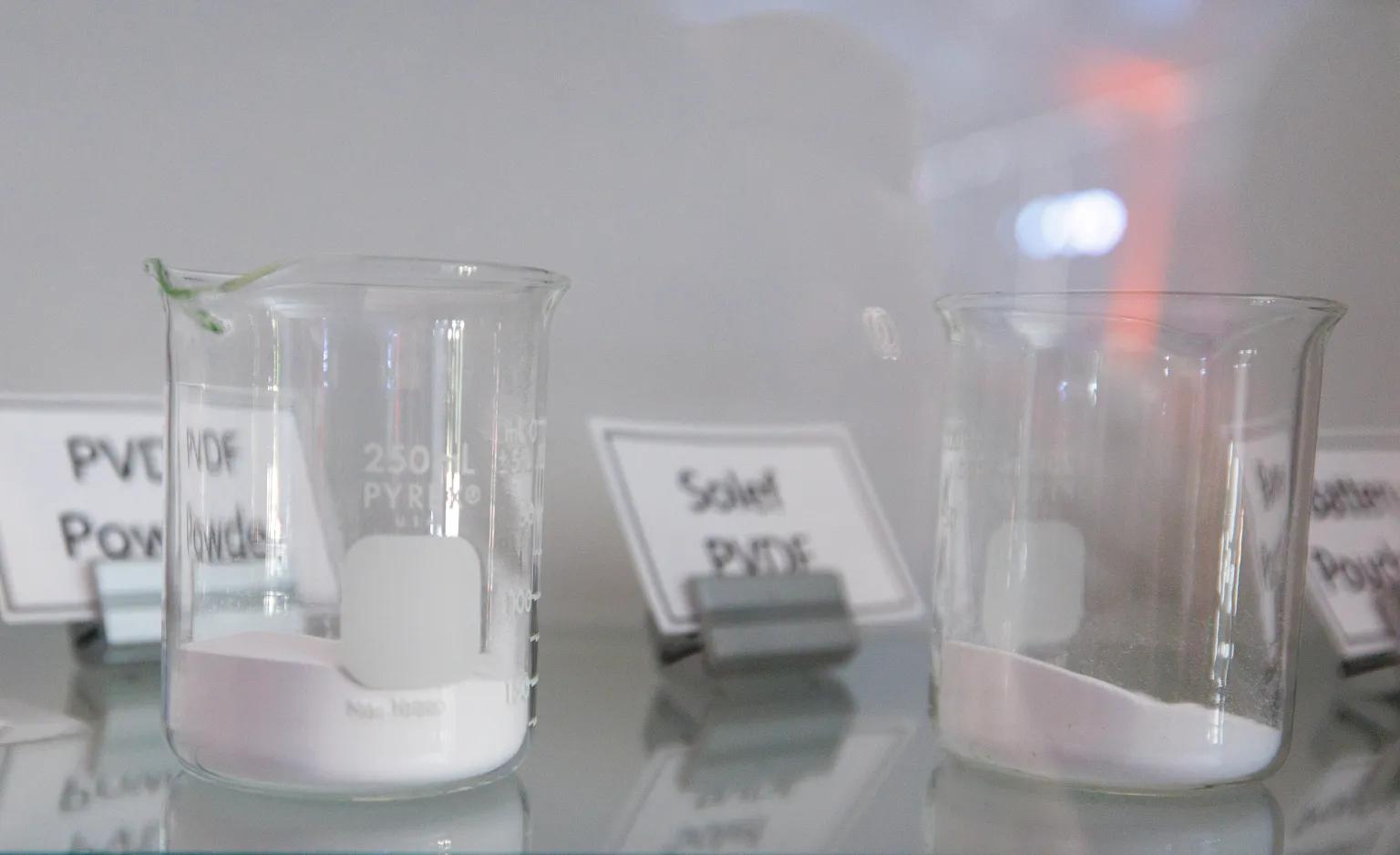
As golden shovels bit into the red clay, few on hand appeared concerned about what the new operation might mean for neighbors.
Most walked right by the small glass case where a set of beakers sat on display, partially filled with white powders. Little placards identified the contents: PVDF — a building block of batteries whose own building blocks may be with us forever.
Craig Welch reported this story for The Examination, Clare Fieseler for The Post and Courier, and Emilie Rosso for Belgian public broadcaster RTBF. Jana Cholakovska, Pooja Sarkar, and Alec Gitelman were fellows at Columbia Journalism Investigations, the investigative-reporting unit at the Columbia Journalism School. The Examination, The Post and Courier, and CJI provided editing, fact-checking, data analysis, photography, graphic illustration, and other support.
